
Behavioral health company Acadia Healthcare (NASDAQ: ACHC) reported Q2 CY2025 results beating Wall Street’s revenue expectations, with sales up 9.2% year on year to $869.2 million. The company expects the full year’s revenue to be around $3.33 billion, close to analysts’ estimates. Its non-GAAP profit of $0.83 per share was 17.4% above analysts’ consensus estimates.
Is now the time to buy Acadia Healthcare? Find out by accessing our full research report, it’s free.
Acadia Healthcare (ACHC) Q2 CY2025 Highlights:
- Revenue: $869.2 million vs analyst estimates of $842.2 million (9.2% year-on-year growth, 3.2% beat)
- Adjusted EPS: $0.83 vs analyst estimates of $0.71 (17.4% beat)
- Adjusted EBITDA: $201.8 million vs analyst estimates of $177.2 million (23.2% margin, 13.9% beat)
- The company dropped its revenue guidance for the full year to $3.33 billion at the midpoint from $3.35 billion, a 0.7% decrease
- Management lowered its full-year Adjusted EPS guidance to $2.55 at the midpoint, a 3.8% decrease
- EBITDA guidance for the full year is $687.5 million at the midpoint, in line with analyst expectations
- Free Cash Flow was -$34.24 million, down from $16.91 million in the same quarter last year
- Sales Volumes fell 1.2% year on year (1% in the same quarter last year)
- Market Capitalization: $1.97 billion
Company Overview
With a network of over 250 facilities serving patients in 38 states and Puerto Rico, Acadia Healthcare (NASDAQ: ACHC) operates facilities providing mental health and substance use disorder treatment services across the United States.
Revenue Growth
Examining a company’s long-term performance can provide clues about its quality. Any business can put up a good quarter or two, but many enduring ones grow for years. Regrettably, Acadia Healthcare’s sales grew at a mediocre 4.8% compounded annual growth rate over the last five years. This fell short of our benchmark for the healthcare sector and is a rough starting point for our analysis.
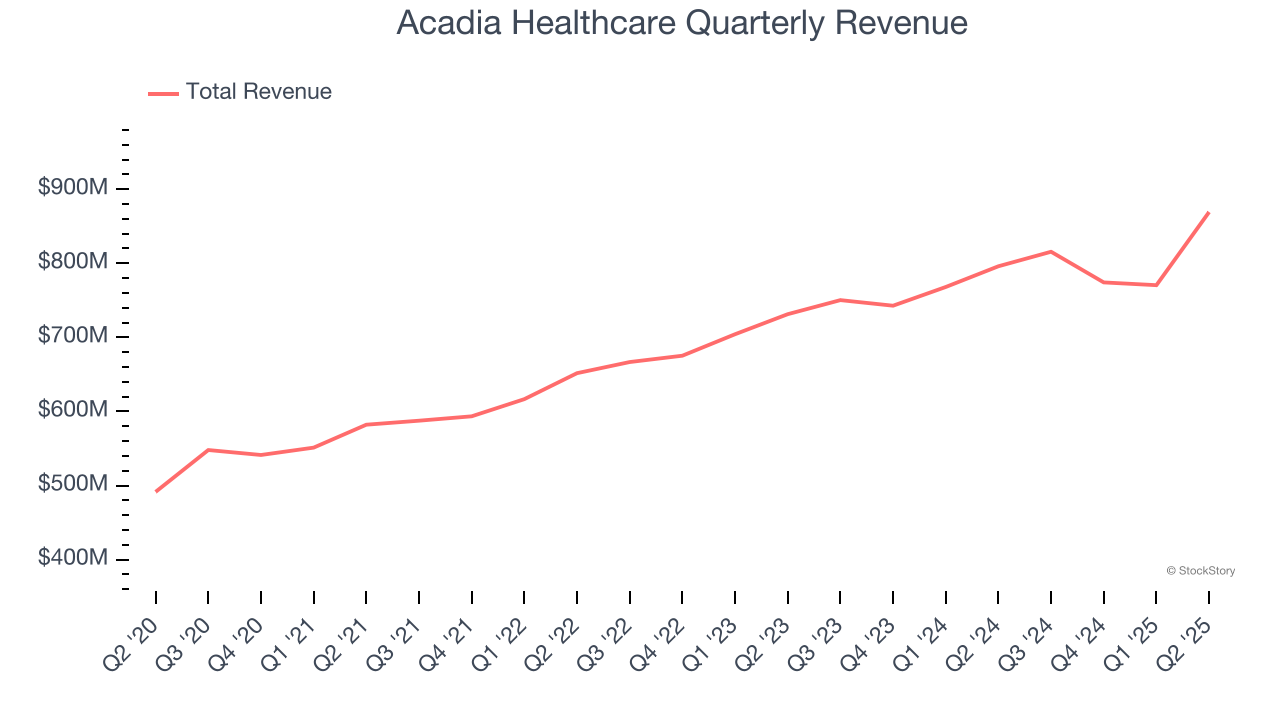
We at StockStory place the most emphasis on long-term growth, but within healthcare, a half-decade historical view may miss recent innovations or disruptive industry trends. Acadia Healthcare’s annualized revenue growth of 7.8% over the last two years is above its five-year trend, suggesting some bright spots. 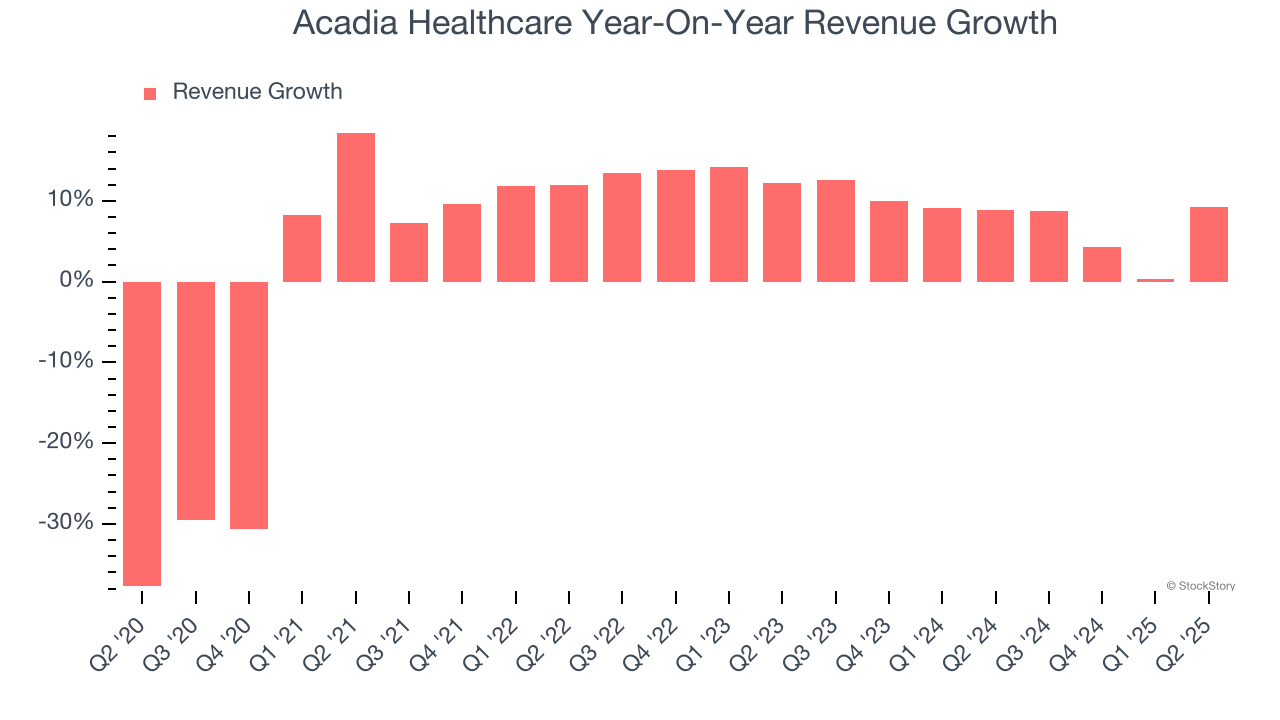
We can dig further into the company’s revenue dynamics by analyzing its number of admissions, which reached 49,903 in the latest quarter. Over the last two years, Acadia Healthcare’s admissions averaged 1.5% year-on-year growth. Because this number is lower than its revenue growth, we can see the company benefited from price increases. 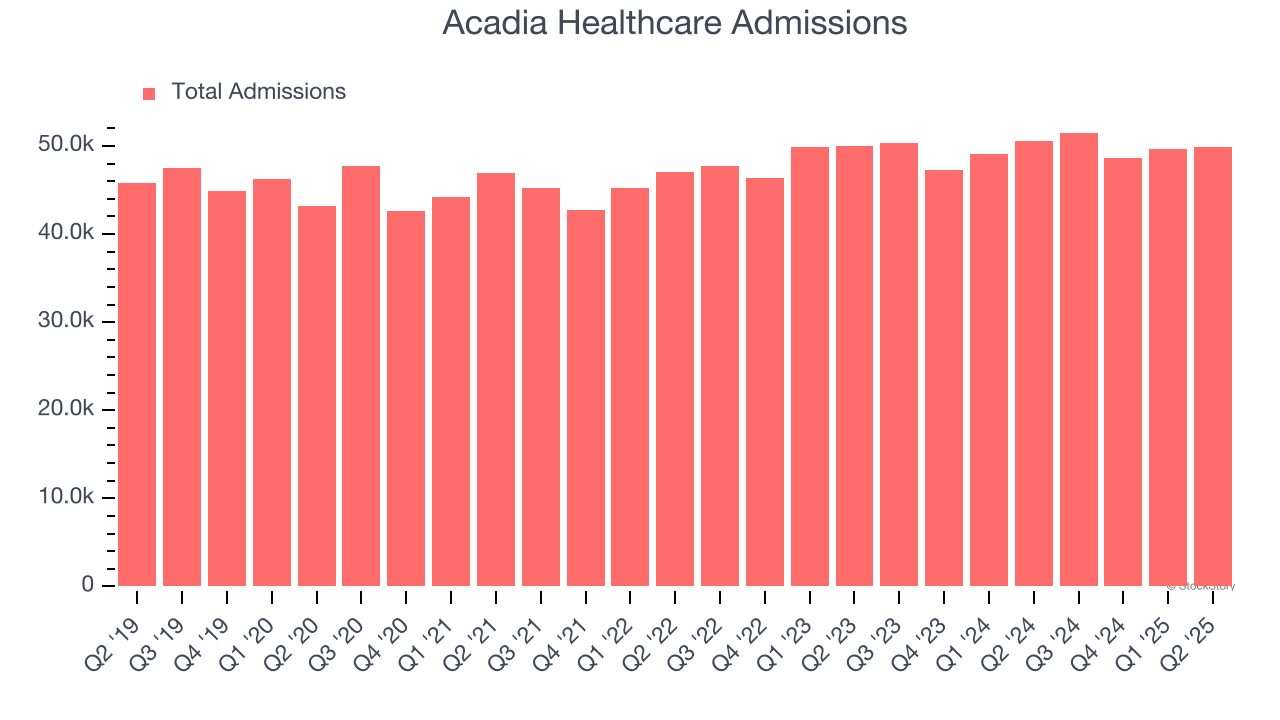
This quarter, Acadia Healthcare reported year-on-year revenue growth of 9.2%, and its $869.2 million of revenue exceeded Wall Street’s estimates by 3.2%.
Looking ahead, sell-side analysts expect revenue to grow 8% over the next 12 months, similar to its two-year rate. This projection is above the sector average and implies its newer products and services will help sustain its recent top-line performance.
Software is eating the world and there is virtually no industry left that has been untouched by it. That drives increasing demand for tools helping software developers do their jobs, whether it be monitoring critical cloud infrastructure, integrating audio and video functionality, or ensuring smooth content streaming. Click here to access a free report on our 3 favorite stocks to play this generational megatrend.
Operating Margin
Acadia Healthcare has done a decent job managing its cost base over the last five years. The company has produced an average operating margin of 12.4%, higher than the broader healthcare sector.
Looking at the trend in its profitability, Acadia Healthcare’s operating margin decreased by 7.8 percentage points over the last five years. The company’s two-year trajectory also shows it failed to get its profitability back to the peak as its margin fell by 5.9 percentage points. This performance was poor no matter how you look at it - it shows its expenses were rising and it couldn’t pass those costs onto its customers.
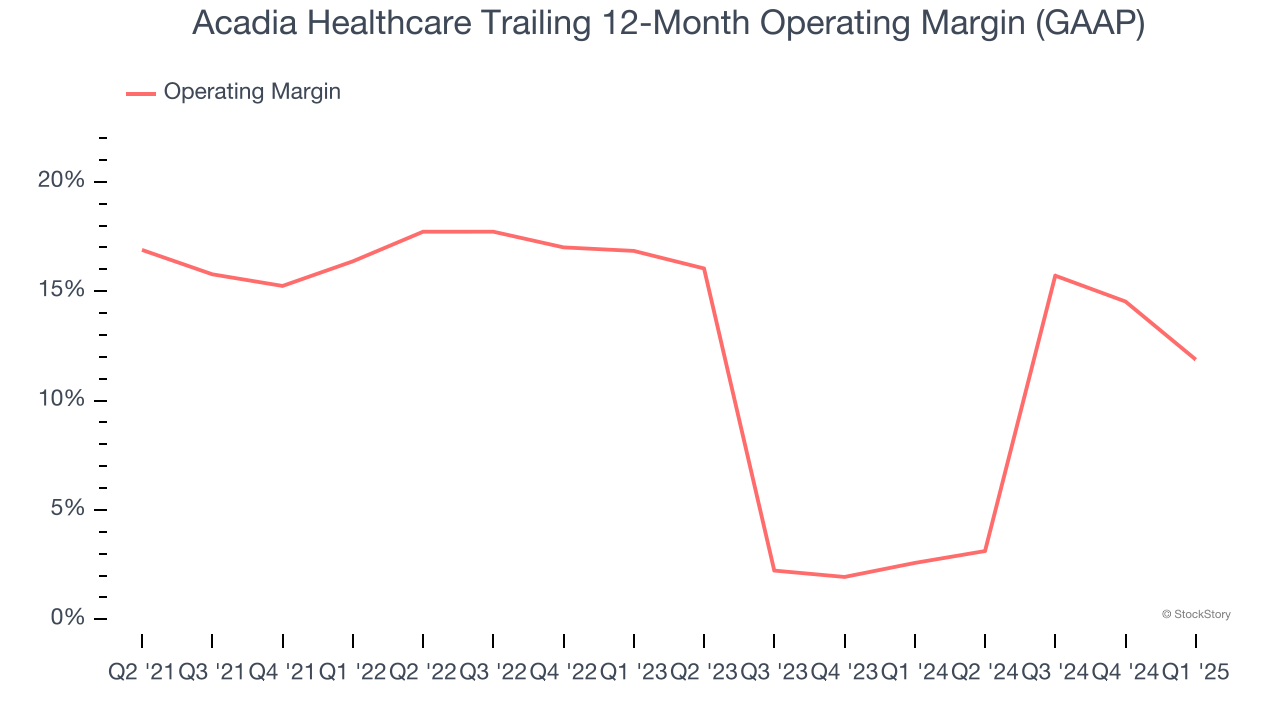
in line with the same quarter last year. This indicates the company’s overall cost structure has been relatively stable.
Earnings Per Share
We track the long-term change in earnings per share (EPS) for the same reason as long-term revenue growth. Compared to revenue, however, EPS highlights whether a company’s growth is profitable.
Acadia Healthcare’s EPS grew at a decent 6.9% compounded annual growth rate over the last five years, higher than its 4.8% annualized revenue growth. However, we take this with a grain of salt because its operating margin didn’t improve and it didn’t repurchase its shares, meaning the delta came from reduced interest expenses or taxes.
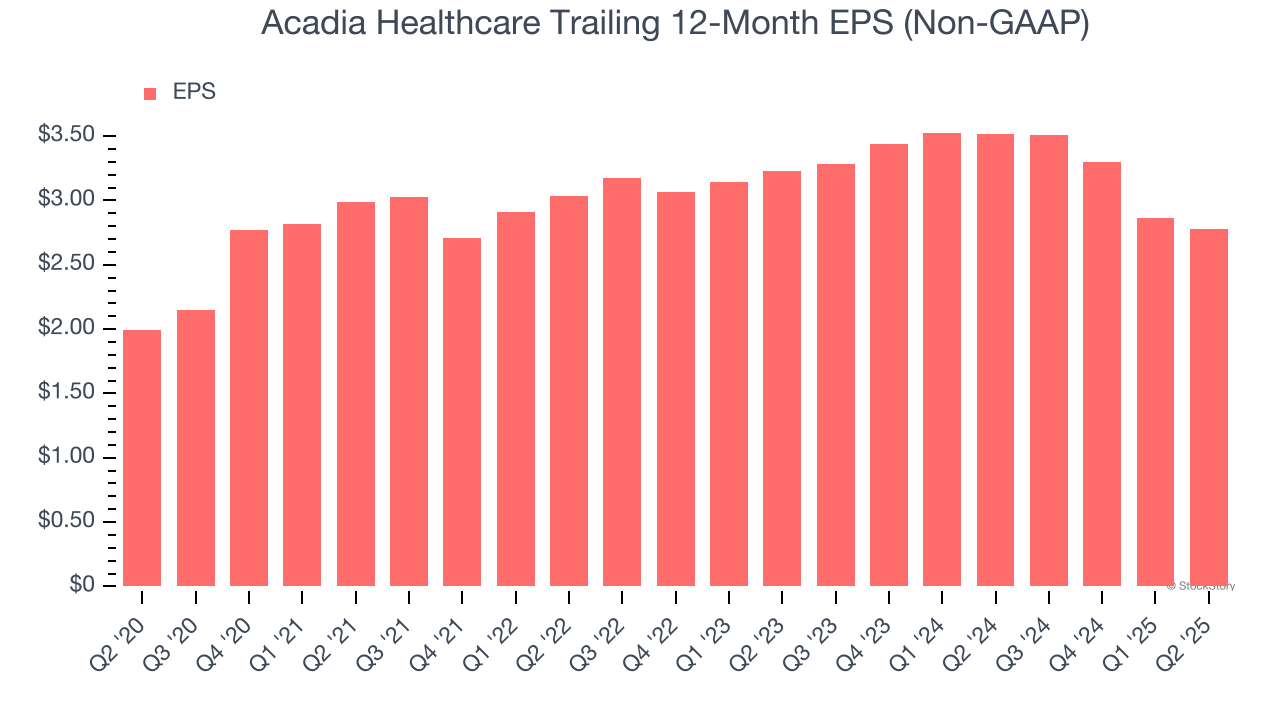
In Q2, Acadia Healthcare reported adjusted EPS at $0.83, down from $0.91 in the same quarter last year. Despite falling year on year, this print easily cleared analysts’ estimates. Over the next 12 months, Wall Street expects Acadia Healthcare’s full-year EPS of $2.78 to stay about the same.
Key Takeaways from Acadia Healthcare’s Q2 Results
We enjoyed seeing Acadia Healthcare beat analysts’ EPS expectations this quarter. We were also glad its revenue outperformed Wall Street’s estimates. On the other hand, the company's sales volume fell short of Wall Street’s estimates. Looking ahead, full-year revenue guidance was lowered and full-year EPS guidance was lowered and missed. Overall, this quarter could have been better. The stock traded down 3.6% to $21 immediately following the results.
Acadia Healthcare’s earnings report left more to be desired. Let’s look forward to see if this quarter has created an opportunity to buy the stock. What happened in the latest quarter matters, but not as much as longer-term business quality and valuation, when deciding whether to invest in this stock. We cover that in our actionable full research report which you can read here, it’s free.





